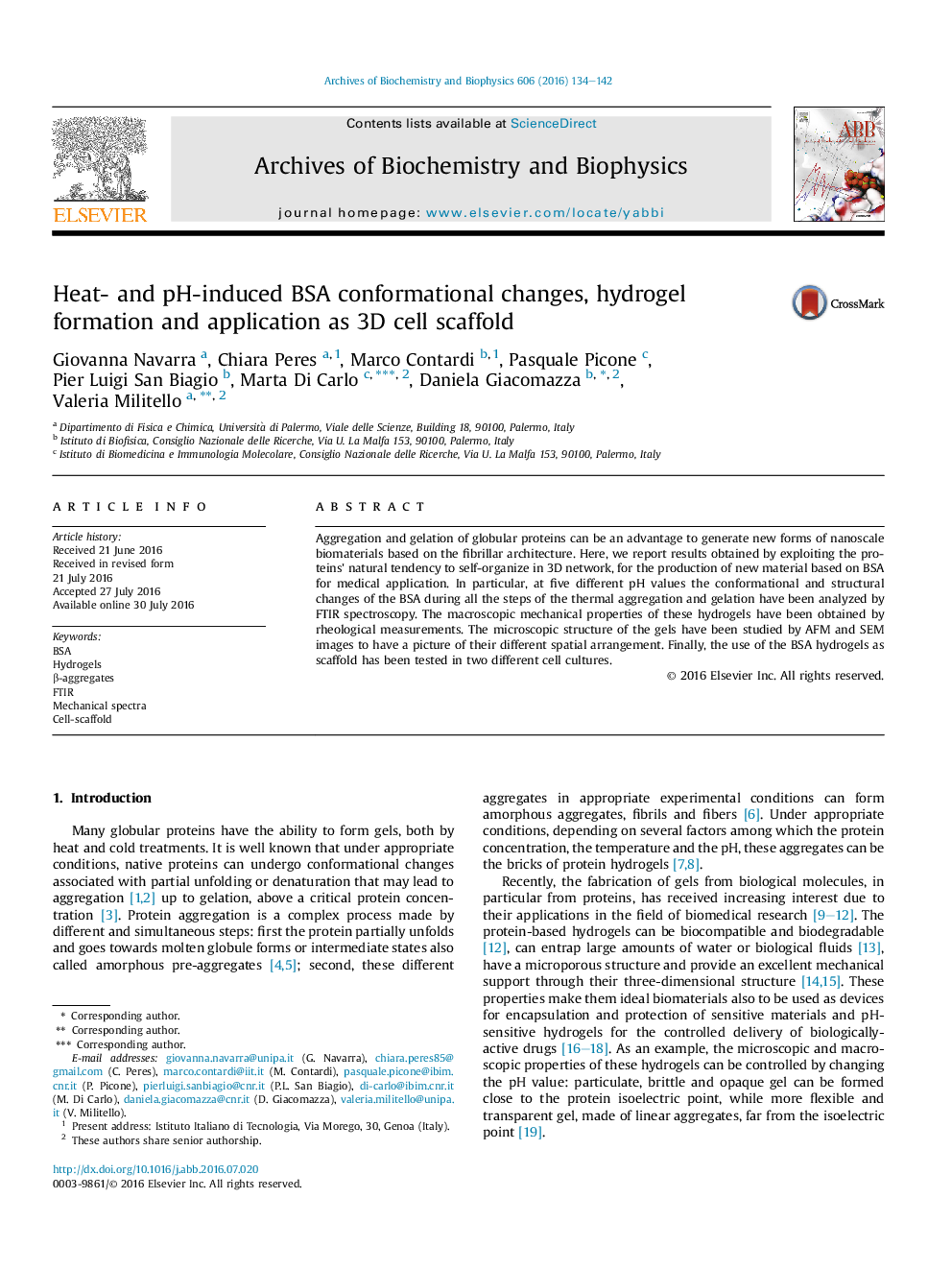| Article ID | Journal | Published Year | Pages | File Type |
|---|---|---|---|---|
| 1924707 | Archives of Biochemistry and Biophysics | 2016 | 9 Pages |
•BSA conformational changes induced by pH and temperature are studied by FTIR experiments.•BSA hydrogels morphologies strictly depend on pH values.•pH values can strongly modulate the mechanical properties of the final hydrogel textures.•BSA hydrogels can be used as possible cell 3D scaffold.
Aggregation and gelation of globular proteins can be an advantage to generate new forms of nanoscale biomaterials based on the fibrillar architecture. Here, we report results obtained by exploiting the proteins' natural tendency to self-organize in 3D network, for the production of new material based on BSA for medical application. In particular, at five different pH values the conformational and structural changes of the BSA during all the steps of the thermal aggregation and gelation have been analyzed by FTIR spectroscopy. The macroscopic mechanical properties of these hydrogels have been obtained by rheological measurements. The microscopic structure of the gels have been studied by AFM and SEM images to have a picture of their different spatial arrangement. Finally, the use of the BSA hydrogels as scaffold has been tested in two different cell cultures.
Graphical abstractFigure optionsDownload full-size imageDownload high-quality image (205 K)Download as PowerPoint slide
